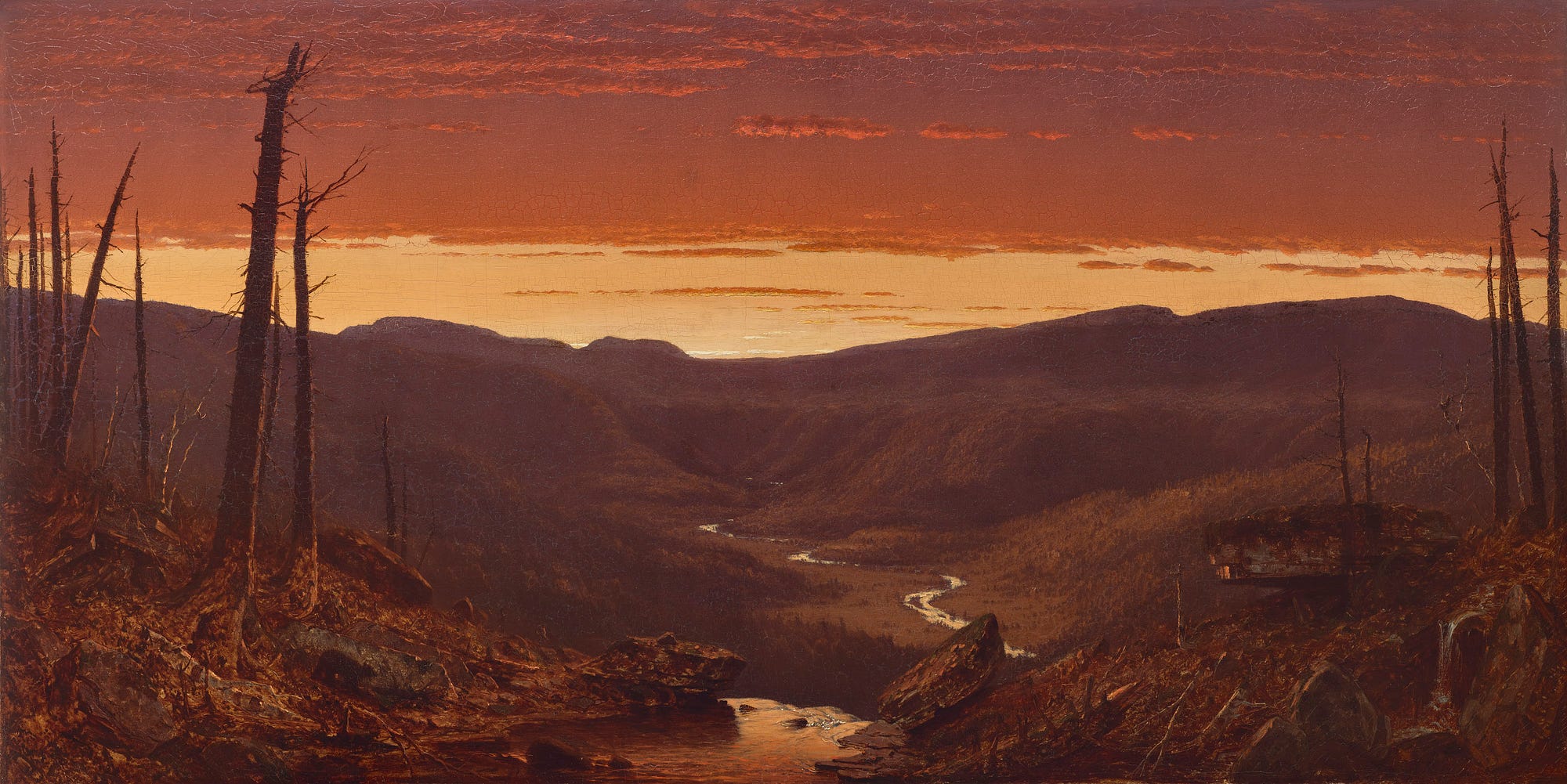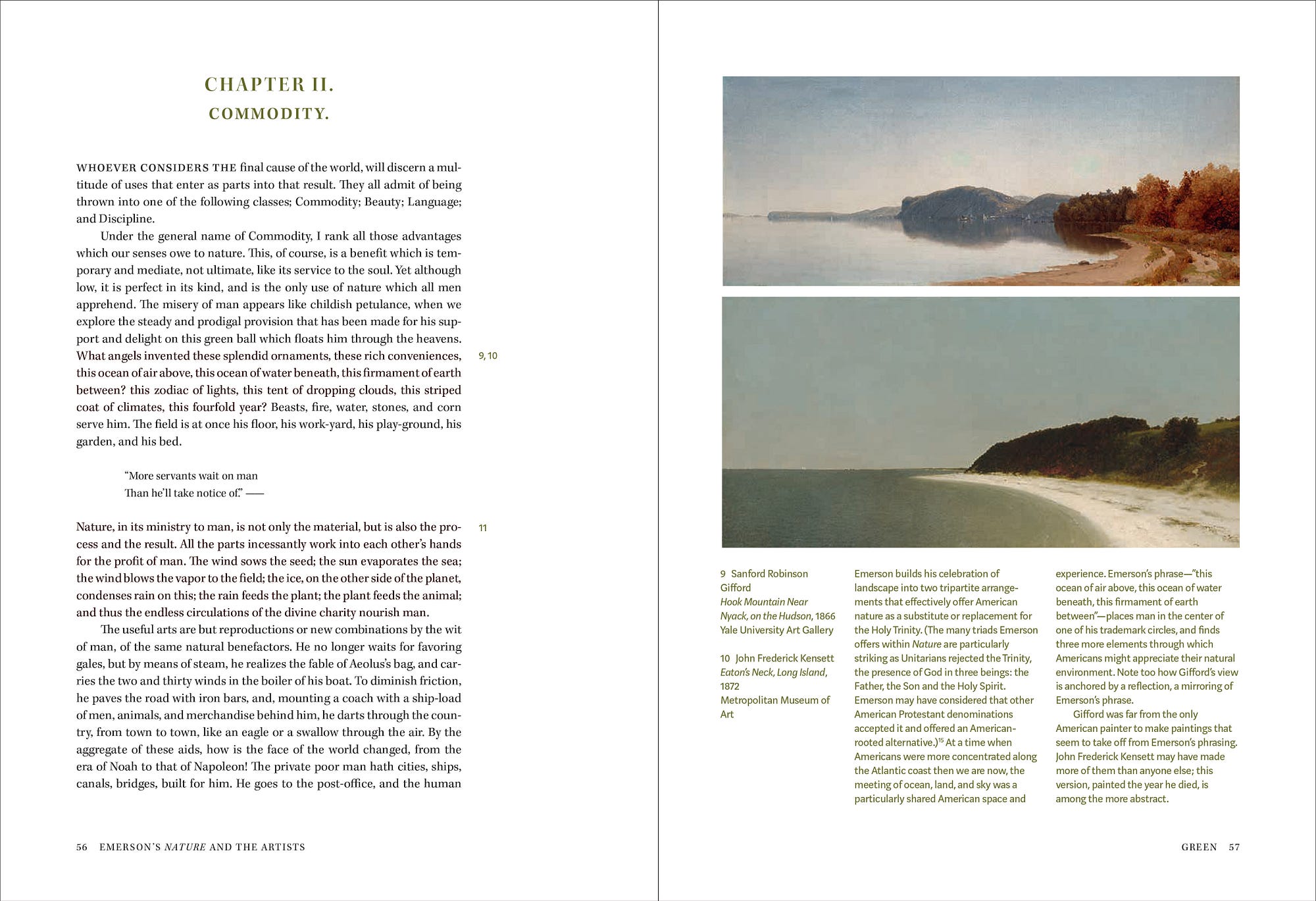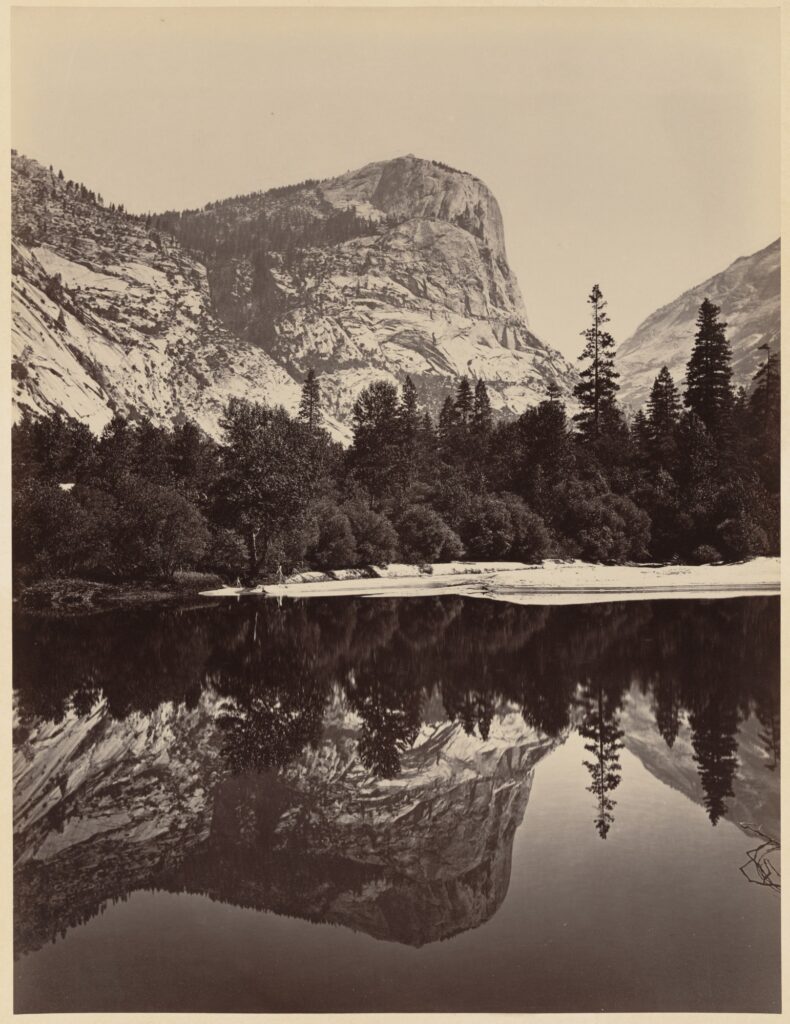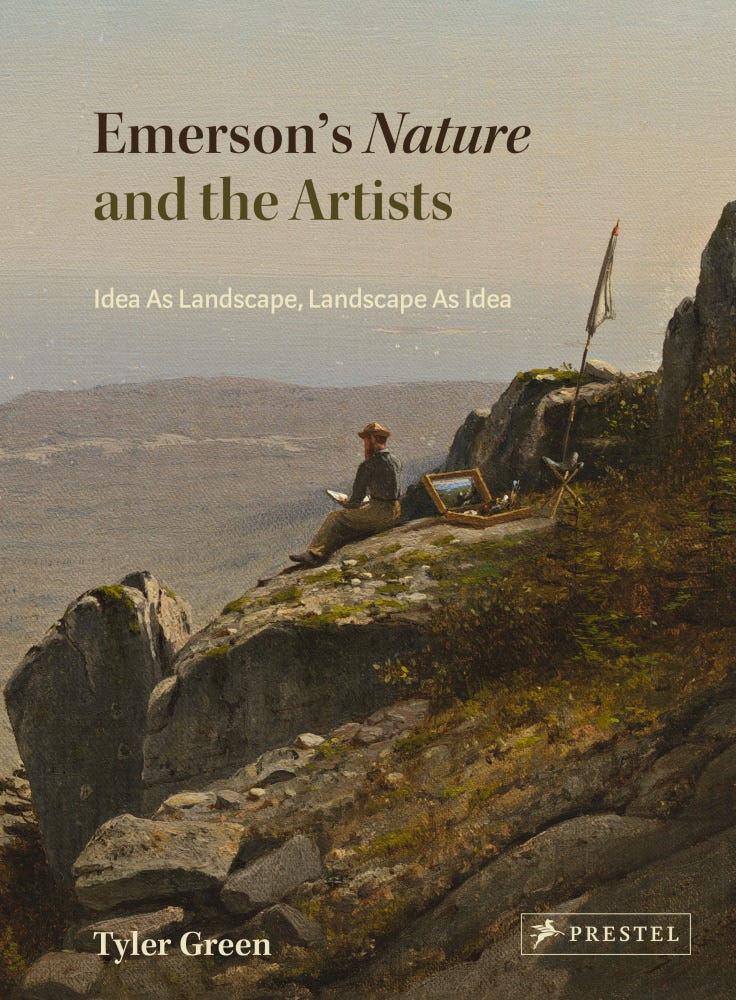
Tyler Green is an award-winning author, historian and critic. He’s also the host and producer of theModern Art Notes Podcast, the celebrated audio programme featuring artists, curators and historians that has aired since 2011.
In a special interview to mark the publication of Tyler’s latest book ‘Emerson’s Nature and the Artists’, Open GLAM specialistDouglas McCarthy sat down with him to explore Emerson’s understanding of landscape and the public commons, and how they relate to museums and open access in the digital realm.
‘Emerson’s Nature and the Artists’ considers Ralph Waldo Emerson’s seminal 1836 essay and continues Tyler Green’s examination into how artists have impacted America, its culture, intellectual life, and the idea of the American nation. Remarkably for an art history publication, all of the artworks in the book were sourced from art museums and libraries with open access policies.
Tyler, what inspired you to write this book?
I started writing a kind of biography of the artist and photographer Carleton Watkins in 2011. As Watkins is most famous for his work at Yosemite in 1861, 1865–66, and 1878–79, and as those 1861 pictures were believed to be primary in informing the invention of the national park at Yosemite, I knew I was going to have to re-open the history of the Yosemite Idea (which historians had not much examined in about 70 years). Through my research, I came to realise how important Ralph Waldo Emerson’s ideas, especially in Nature, were to key Yosemiteans such as Thomas Starr King, Frederick Law Olmsted, and very likely to Watkins too. The more I researched Emerson’s journals, notebooks, correspondence, essays and especially his 1836 book Nature, the more I saw how his ideas informed much American art, and all the way through precisionism in the 1920s-40s.
The other inspiration was open access itself. One reason I picked Watkins to write about in 2011 is that I knew that his work was particularly well held by open access institutions, which helped make the book affordable to write. Still, that project reminded me of the bizarre corruption that is the image-fee model: my Watkins book was published by University of California Press. Yet the University of California’s Bancroft Library charged me image rights fees, and so too the University of California’s Hearst Museum (whose fees were so high I could not afford them).
How did Emerson view the public commons and how relevant is his vision to today’s digital world?
In 1835, the town of Concord, Massachusetts asked Emerson to give an address to mark the town’s 200th anniversary. Emerson researched Concord’s history, and realised that the common in the middle of the town — mostly an agricultural space shared by many townsfolk, but also a site of public gathering — was descended from an old English practice. He talked about it in his 200th anniversary lecture. At just about the same time, Emerson is beginning to write Nature, his first book and arguably the most important non-fiction book written in America between the Revolution and the Civil War. In the third paragraph of Nature, Emerson builds the commons idea into his landmark definition of “landscape,” a word that was then new to American English:
‘The charming landscape which I saw this morning, is indubitably made up of some twenty or thirty farms. Miller owns this field, Locke that, and Manning the woodland beyond. But none of them owns the landscape. There is a property in the horizon which no man has but he whose eye can integrate all the parts, that is, the poet. This is the best part of these men’s farms, yet to this their land-deeds give no title.’

Emerson’s definition challenged America’s already rapacious, westering hyper-capitalism, offering a new model that emphasises community over private interest. It’s a definition that I think was influential to the men (and woman) who developed the Yosemite Idea and thus invented the national park — who quite often migrated Emerson’s ideas into their own essays and lectures and sermons. I think I’d argue that the digital commons — which rejects capitalistic notions of ownership and control in favour of broad public access — has a historical relationship to Emerson’s idea (and to the British commons model before it).
To what extent was ‘Emerson’s Nature’ driven and shaped by the availability of open access images from museums?
Oh, entirely. It is the only way the research here could have been manifested as a book. Financially, I would not have been able to do this book without it.
The way many or most art historians handle image rights for their books is to apply for a grant, a bizarre process that allows charity to pay for that which is in the public domain. Well, I have a self-invented career. I have never even come close to getting a grant to do anything from anyone in the art world. I don’t have the academic connections that serve as validation and elide the process of getting a foundation’s advisers and board to approve and fund work.
Another factor: much of the history and critical analysis that’s in my book challenges or attempts to revise or upturn previous work… some of which was written by the very people who advise or sit on the board of foundations to which scholars go to ask for money to cover image-rights fees. The present system requires a certain numbing fealty, and in so doing helps ossify art histories and restricts the development of new ideas. It damages the field; it restrains and harms the construction of knowledge.

Did you approach non-open access museums holding works that you wanted to reproduce?
No. From the beginning of the project, the concept was to link Emerson’s migration of the commons idea into his work and American culture to the digitally-enabled present. Plus I simply can’t afford to play the game in which fee-charging institutions participate. I hope that when readers see an out-of-copyright work referenced in my text and don’t see an image that they’ll immediately understand that ‘museum X’ is limiting the construction of knowledge through its adherence to an out-of-date, broken practice.
In the book you write the following,
‘Nothing restrains our knowledge of how art and artists have engaged with and impacted broader histories than the absurd rights fees that most art museums, libraries, and other institutions charge to publish pictures of out-of-copyright art.’
Do you think that the example of publications like ‘Emerson’s Nature’ can help change this situation, and what else needs to happen?
I hope the book is an example — thanks to advocates such as y’all and the inspiring and enabling work of museum and library staff that have advocated for open access policies — that open access has become broad enough that scholars can readily run around the broken, damaging, and semi-corrupt system of image-rights fees, at least in certain fields and in certain places and with certain work. I hope it says something like look at what is possible.
What else needs to happen is clear: every American art museum and library should adopt open access. There is no reasonable argument for mission-driven non-profit institutions restricting scholars’ access to out-of-copyright material through absurd fees. It is one of many ways in which museums and libraries prioritise the wealthy and well-connected (who are most often white males, of course). It’s an insidious system that begins early, too: many wealthy universities make image rights funds available to their students so that they can publish; non-wealthy universities do not.
Furthermore, many associations of scholars have guidelines barring their members from paying for access to material. And yet.

In what other ways are Natureand Emerson’s work relevant to our lives today?
In the book I write about how Emerson helped construct whiteness in America, and point to how artists jumped off from or extended Emerson’s constructions. We cannot understand American citizenship without understanding its historical relationship to whiteness. Emerson also wrote about what we now call ecology, about the interconnectedness of living things, in ways that tie it to the idea of the American nation. That seems pretty relevant in an era increasingly imperilled and threatened by climate change (which the US has been a leader in creating).
I’m interested in how Emerson used Nature to argue for a specifically American national culture and to detail how it might be constructed. That’s not something Americans think much about now, but might. Finally, the poet Kenneth Burke said that Nature is a “happiness pill,” that Emerson’s writing and love of nature is joyful and rewarding and wonderful and lovely and warm. It is. Pleasure is always relevant.
Order Emerson’s Nature and the Artists. Follow Tyler on Twitter and Instagram, and visit his website https://tylergreenbooks.com.

Citation
McCarthy, D. (2021). ‘Emerson’s Nature’ and the commons. Zenodo. https://doi.org/10.5281/zenodo.13385129